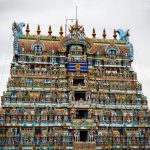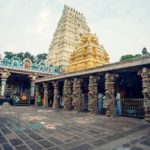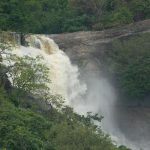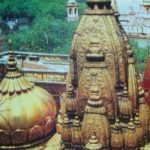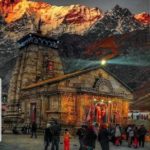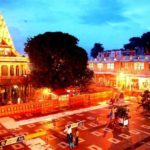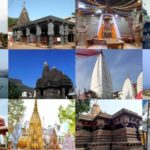The Nataraja Temple Chidambaram is also known as the Thillai Nataraja Temple. It is an ancient temple of Lord Shiva in the dancing or Nataraja form. The temple also features carvings of all the 108 Karanas or dance postures described in the Natya Shastra by Bharata Muni. These postures are the main postures for the Bharatanatyam dance form. The Nataraja Temple Chidambaram is one of the Pancha Sabhai Sthalams where Lord Shiva danced. It is also a Pancha Bhoota Sthalam and represents the element of space or ether.
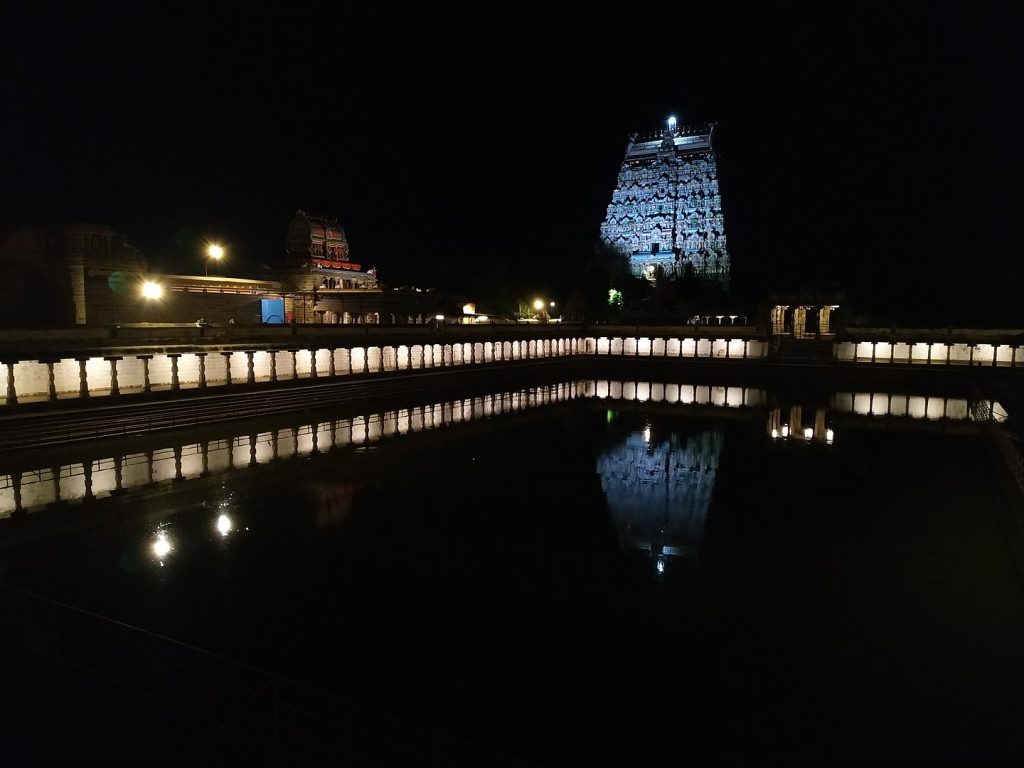
Image Source
History
The place where the temple is located was called Thillai because it had many Thillai trees. Hence the name Thillai Nataraja Temple. The Cholas renamed the place as Chidambaram. The root word for Chidambaram is Chitrambalam which refers to ‘Chit’ which is wisdom or consciousness and ‘Ambalam’ which is the atmosphere. Old texts also refer to the town and the temple by many other names. Sangam era texts that date back to before the 5th-century mention the temple. 6th and 7th-century texts as well as in the Suta Samhita and Sri Kanda Puranam that date to the 7th and 10th centuries mention the temple.
The Cholas
Chidambaram was the capital of the Chola dynasty. The Cholas consecrated the temple in the 10th century. The deity Nataraja is the family deity of the Cholas. The Nataraja Temple Chidambaram houses not only the Nataraja deity but also many other noteworthy deities. The earliest known shrine dedicated to Devi or Amman is in this temple. The Nataraja temple at Chidambaram also has shrines for Ganesh, Vishnu and Murugan. The shrine for Surya features a chariot. The temple also has one of the oldest Shivaganga pools.
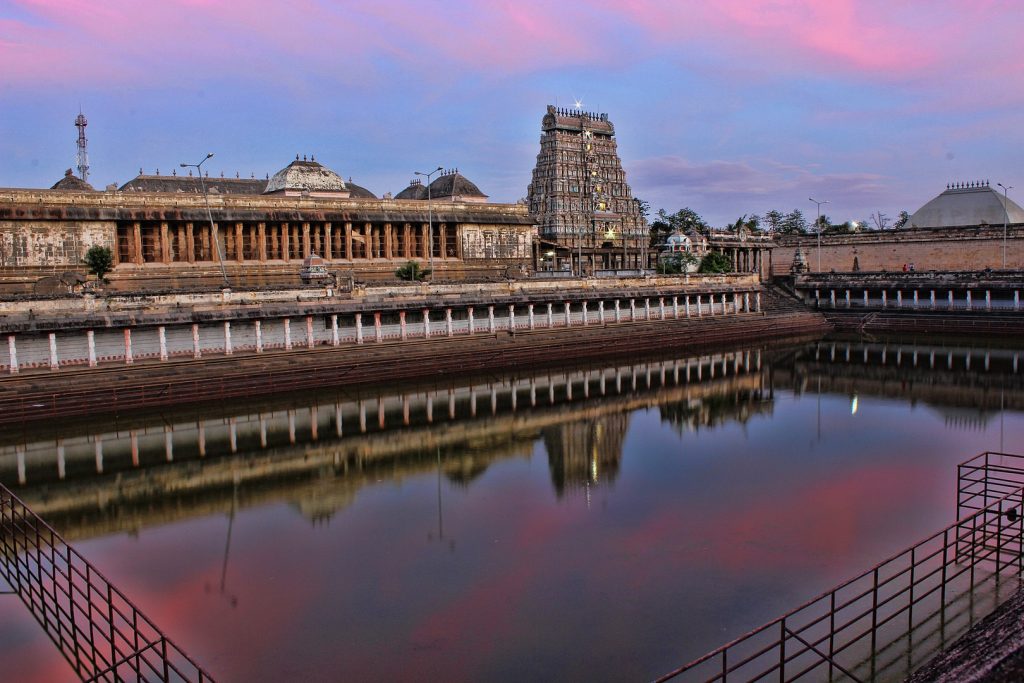
Image Source
The Nataraja Temple Chidambaram thrived under the rule of the Cholas. The general of king Kulothunga Chola I called Naralokaviran built the steps to the Sivaganga pool, the Goddess shrine, the gardens, the Thirugnana Sambandhar shrine and also the pilgrim roads around the temple. He also constructed a hall to recite the Thevaram hymns which he had engraved in copper. The thousand pillared hall dates back to the late 12th century and the Gopura gateways to the later 12th century and early 13th century.
The Pandya dynasty came into power in the mid 13th century and they also supported the Chidambaram temple. Soundara Pandya constructed the huge eastern gateway of the temple.
The Deity
The Nataraj form of Lord Shiva is the main deity of the temple. He is bejewelled and depicted as the master of the dance form of Koothu-Bharatnatyam. As opposed to most Shiva temples where the Lingam has the pride of place, here Lord Shiva is given importance in the dancing form. The Chitsabha has a Spadiga (crystal) Lingam is a piece of the crescent moon that fell from Lord Shiva’s head.
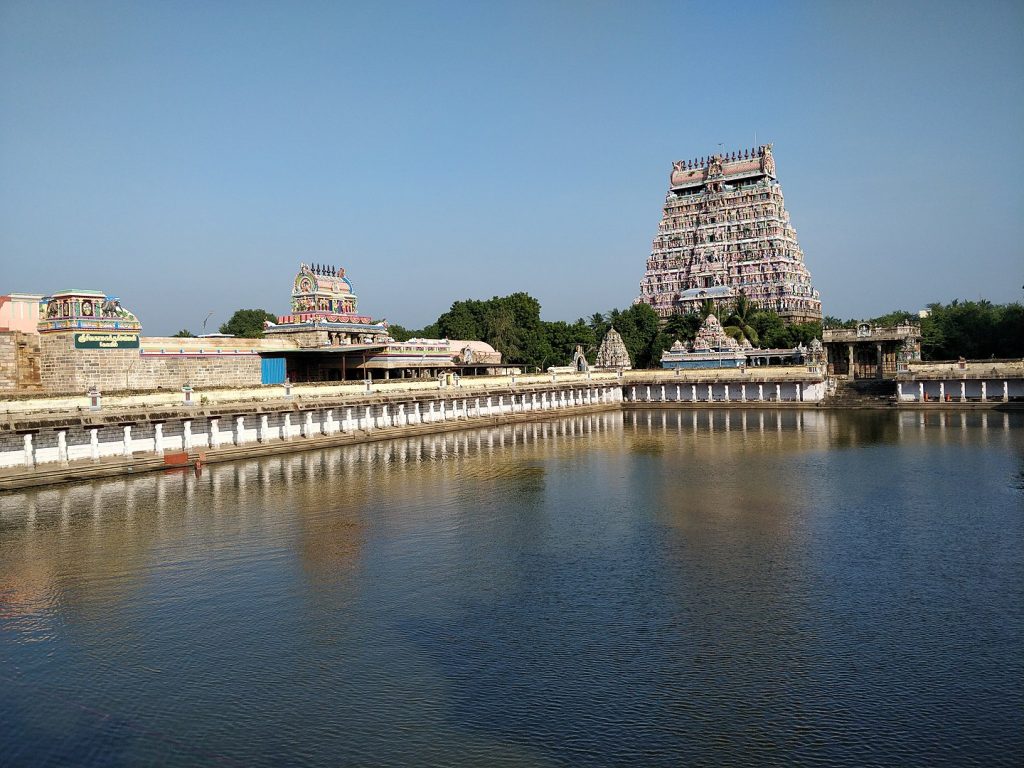
Image Source
Pancha Bootha Sthalam
The Pancha Bootha Sthalams are the five Shiva temples which represent each of the five elements. The Nataraja Temple Chidambaram represents the ether or Akasha element. The other Pancha Bootha Sthalams are the Prithvi Lingam (earth) at Ekambareswarar Temple, Kanchipuram, Appu Lingam (water) at Jambukeswarar Temple, Agni Lingam (fire) at Annamalaiyar/ Arunachaleshwara Temple and Vayu Lingam (air) at Srikalahasti Temple.
Architecture
The temple is in an area of 40 acres with gardens and many walled enclosures. It is square in shape with entrances on all four sides. There are four courtyards or Prakarams. The four entrances to the temple through the outermost wall are rather simple and enclose a garden. The four entrance Gopurams are at the entries to the third courtyard. The temple has many tanks and water sources. The Northern entrance Gopuram gives access to the thousand pillared hall, the Sivaganga tank, the Subramanayar (Murugan) shrine and Sivagamasundari shrine.
There are nine Gopurams in the temple. The Gopurams or temple towers all have very distinct and beautiful sculptures. Multiple panels depict the wedding of Lord Shiva and Parvathi Devi, legends of Gods and Rishis in great detail. The eastern Gopuram is of great interest to those who are interested in Bharatanatyam and dance. It depicts all the 108 postures of the Natya Shastra in separate niches. The inner sanctum is in the Malabar style of architecture.
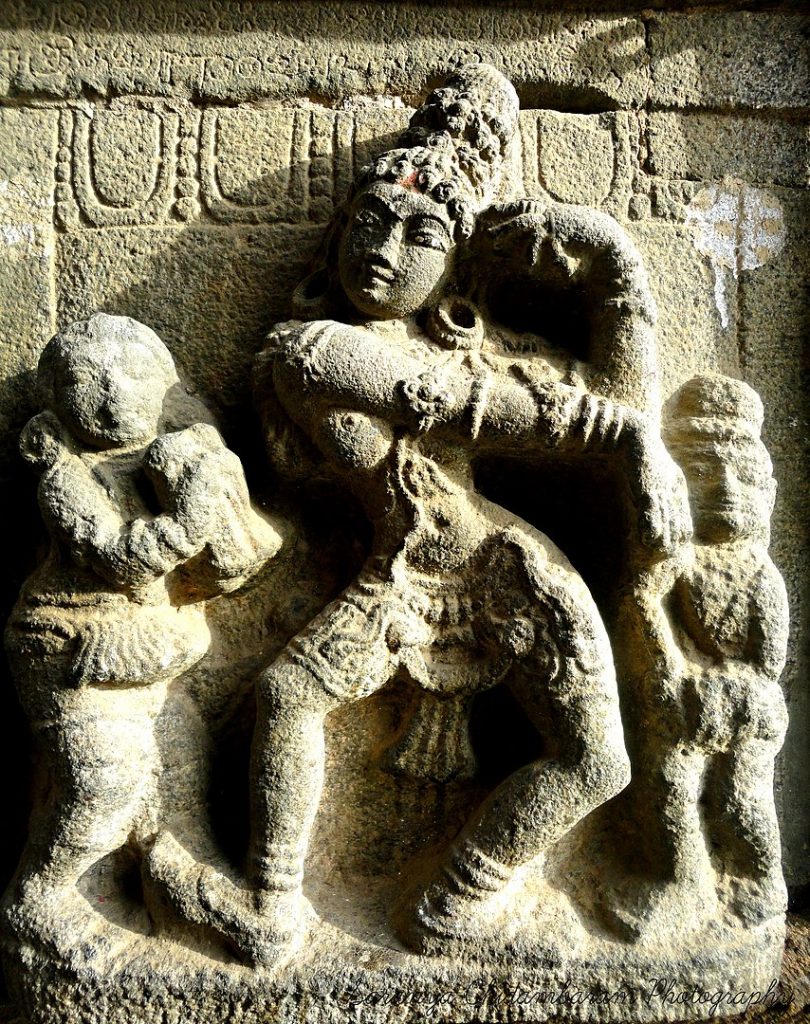
Image Source
Water Bodies And Tanks
The Shivaganga tank is the most popular tank in the temple. The Paramanandha Koobham is a well from which water is drawn for sacred and ritual use. The other water bodies in and around the temple are the Kuyya Theertham, Pulimadu, Vyagrapatha Theertham, Anantha Theertham, Nagaseri Tank Thiruparkadal and also the Brahma Theertham.
Legends
The 12th-century text Chidambara Mahatmya tells the legend of the Chidambaram temple. Lord Shiva and Lord Vishnu visited the great sages in the mythical pine forest. Lord Shiva disguises himself as a beggar while Lord Vishnu is in his female form of Mohini. When the sages see Mohini they become very lustful. Shiva dances the Tandava dance that makes the wives of the sages also lustful. When the sages realise what is happening they understand that their austerities have been very superficial.
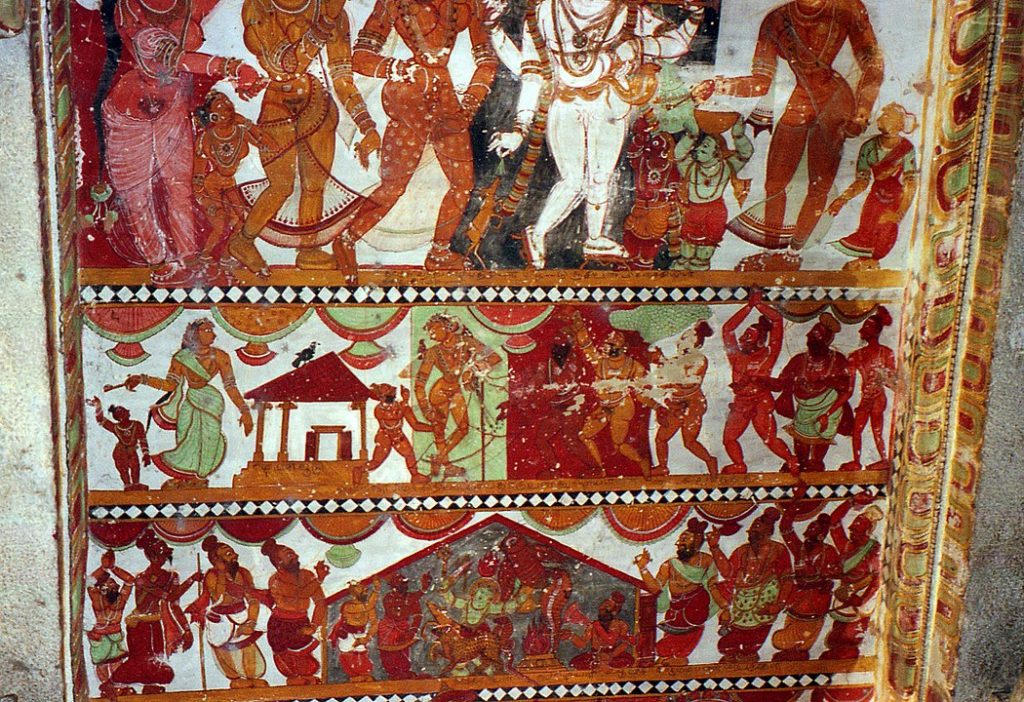
Image Source
Another legend states that the Sages Patanjali and Vyaghrapada wished to see a repeat performance of this dance in the Thillai forest in Chidambaram. So, they worship Shiva Lingam and meditate. Lord Shiva, impressed by their devotion dances for them. The place where Lord Shiva danced is where the Nataraja Temple is constructed. It is also one of the Pancha Sabhai Sthalams. The others are the Vadaranyeswarar Temple, Thiruvalangadu, the Kutralanathar Temple, Courtallam, the Nelliappar Temple, Tirunelveli as well as the Madurai Meenakshi Temple, Madurai.
Nava Puliyur Temples
Maharishi Vyagrapada and Patanjali witness the divine marriage of Lord Shiva and Devi Parvathi at Chidambaram. They also see the dance of Lord Shiva. Lord Shiva then advises them to make a pilgrimage to nine different temples where he has manifested as a Lingam after which they were to visit Lord Brahma in Tirupattur and Lord Vishnu in Srirangam to attain Moksha. This Nava Puliyur pilgrimage would remove all their bad karma. Pilgrims undertake the Nava Puliyur pilgrimage even today to remove their karma.
Raja Raja Chola And The Thevaram
Raja Raja Chola heard excerpts of the Thevaram in his court and wished to listen to the entire set of hymns. He asked the priest Nambiyandar Nambi to find the texts. The priest learned that the texts were in a chamber in the second precinct of the Thillai Nataraja Temple. When the king wanted to retrieve them the Dikshitars of the temple stated that the chamber would only be opened when the Naalvar (the four saints Appat, Sundarar, Thirugnanasambandar and Manikavasagar) arrived at the temple. The king then made idols of the four saints and brought them to the temple. He then opened the chamber. The Thevaram scripts were on Cadjan leaves and half-eaten by white ants. Since he saved Thirumurai Raja Raja Chola known by the title of Tirumurai Kanda Cholan or the one who saved Thirumurai.
In another version of this story, the Dikshitars asked for the 63 Nayanmars to come to the temple and the King made idols of all the 63 Nayanmars and opened the chamber. Old inscriptions also indicate that the king of Angkor who built Angkor Wat sent a jewel to the temple through the Chola King Kulothunga.

Image Source
Saptha Vigraha Moorthis
The Nataraja Temple in Chidambaram is also a part of a group of temples called the Sapta Vigraha Moorthis. This group of temples features the Mahalingaswamy Temple at Thiruvidaimarudur as the centre and has seven temples at cardinal points around the central temple. These seven temples are the Saptha Vigraha Moorthis. The seven deities that form this group are
- Nataraja In Nataraja Temple At Chidambaram
- Chandikeswarar Temple At Tiruchengalur
- Vinayagar In Vellai Vinayagar Temple At Thiruvalanchuzhi
- Muruga In Swamimalai Murugan Temple At Swamimalai
- Bhairava In Sattainathar Temple At Sirkali
- Navagraha In Sooriyanar Temple At Suryanar Kovil
- Dakshinamoorthy In Apatsahayesvarar Temple, Alangudi
The Great Halls Or Sabhais
The temple features many great halls that are called Sabhais.
Nrithya Sabhai
The name of this hall literally translates as the dance hall. It has 50 intricately carved pillars that feature sculptural reliefs of dancers showcasing the Natya Shastra Mudras. There are also sculptures of musicians who seem to be accompanying the dancers. The base of this hall is carved as a chariot complete with horses and wheels. The hall also has sculptures of Lord Shiva, Surya, Chandra, the Vedic Rishis and their wives. There are also sculptures of the Rishis Vyaghrapada and Patanjali who are part of the temple legend. The roof of this hall has an ornate inverted lotus as well as 108 sets of paired figures.
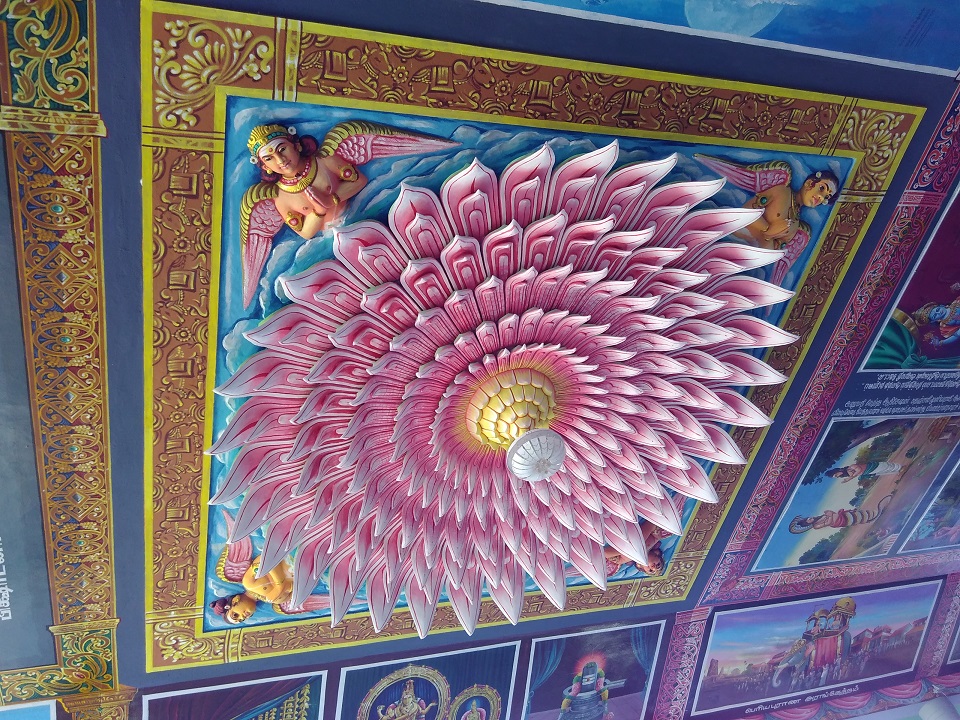
Image Source
The Raja Sabha Or 1000 Pillared Hall
This hall is near the Shivaganga pool. It was a choultry for pilgrims and used for festivals in modern times.
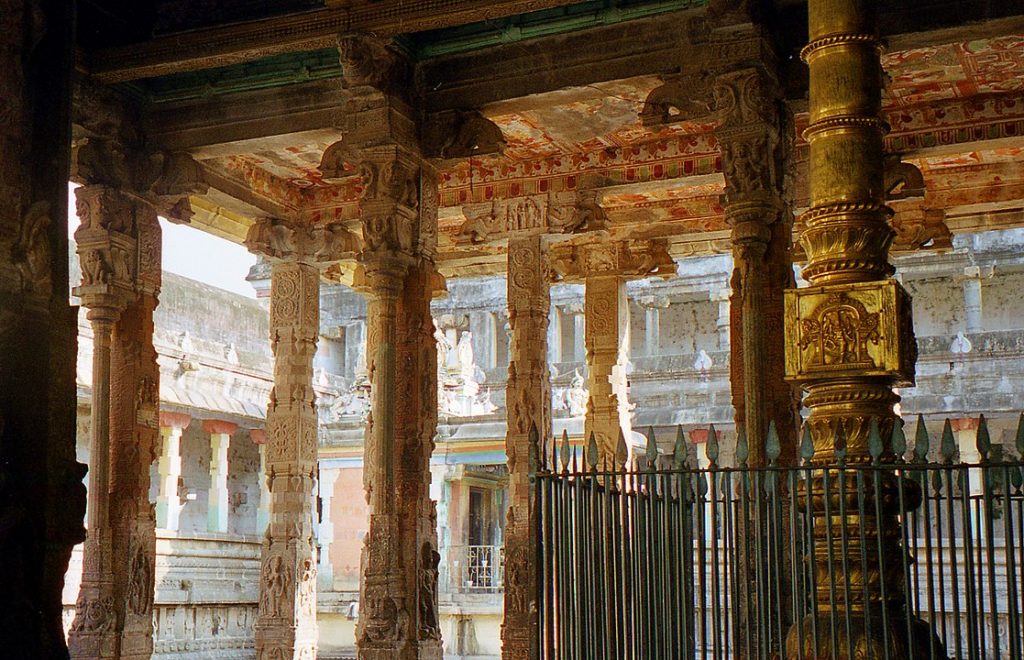
Image Source
Deva Sabha
This is also known as the Per Ambalam or the great hall. It is also the hall where the Nayanars sang. It has beautiful frescoes as well as historic bronze sculptures.
The Temple Car
The temple car is used twice a year for the festival processions.
Festivals
The temple has six festivals a year; Marghazhi Thiruvaadhirai, Masi Chaturdashi, Chittirai Thiruvonam, Uthiram of Aani also known as the Aani Thirumanjanam, Aavani Chaturdasi, and also the Puratasi Chaturdasi or the Arthajama. The Marghazhi Thiruvaadhirai and the Aani Thirumanjanam are more important and also involve a temple car procession.
Traditional Temple Administration – Dikshitars
The Dikshitars are the traditional administrators of the temple. The entire Dikshitar community is known as the Thillai Muvayiravar or the Three Thousand of Thillai.






